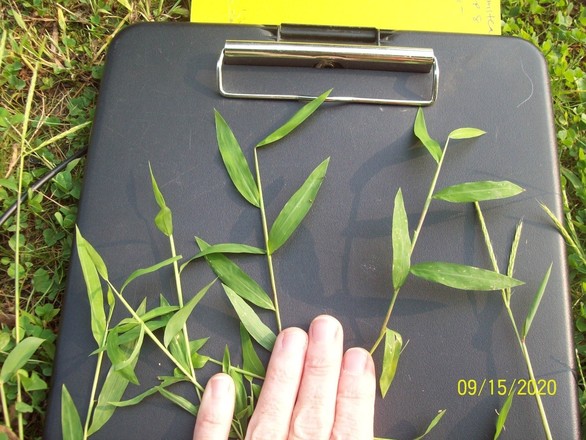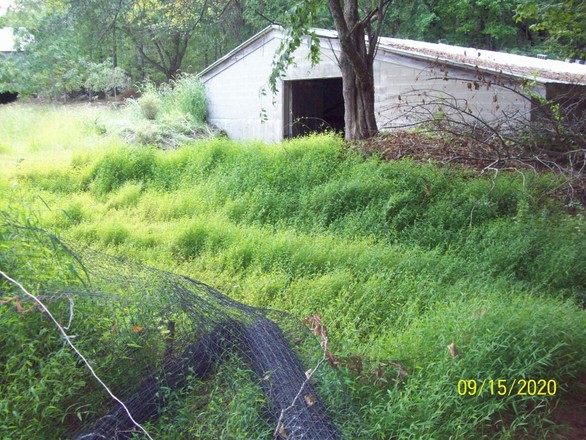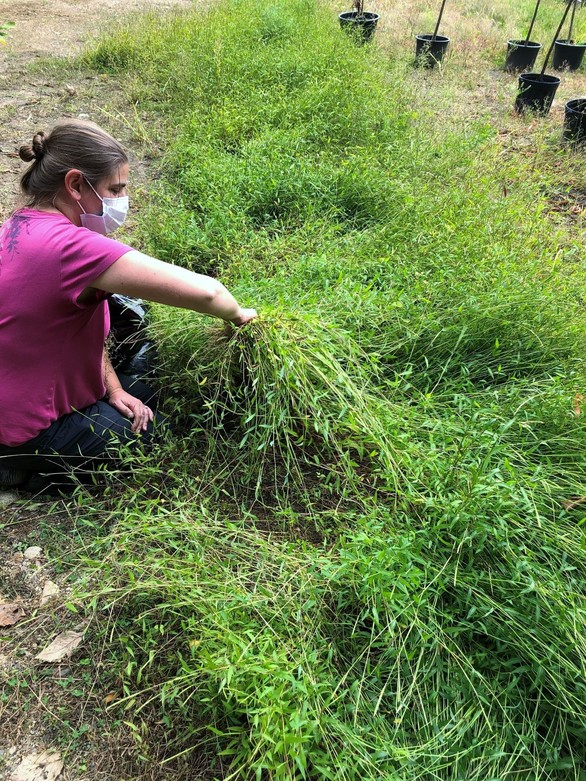|
For Immediate Release
October 9, 2020
Contacts: Gary Fish, Nancy Olmstead, Jim Britt
Invasive Stiltgrass Found at a Nursery in York County
Considered one of the most damaging invasive plant species in the United States, Stiltgrass threatens Maine's native plants and natural habitats
Augusta - The Maine Department of Agriculture, Conservation and Forestry's (DACF) Maine Natural Areas Program (MNAP) urges nursery professionals, landowners, and land managers to carefully search their properties for the invasive stiltgrass (Microstegium vimineum), also known as Japanese Stiltgrass. DACF staff recently confirmed the first known Maine location of this severely invasive plant at a nursery in York County. Previously, the closest known locations for stiltgrass were at nurseries in New Hampshire.
"We knew it was likely that this invasive plant would make its way to Maine eventually," said Gary Fish, State Horticulturist. "It is a severely invasive plant with small seeds that can hitchhike on plant root balls, potted plants, soil, gravel, or equipment."
Stiltgrass forms dense colonies in sun or shade, invading the forest and forming a thick thatch layer over time. The thatch layer makes it difficult for native trees, shrubs, and wildflower seeds to establish and grow. Thatch buildup also raises fire risk. Stiltgrass is an annual plant, and each stem can produce hundreds to thousands of seeds before dying in the fall. Seeds survive for at least five years in the soil.
Nancy Olmstead, an Invasive Plant Biologist with MNAP, urges landowners to search recently disturbed areas for new infestations of stiltgrass. "It's imperative to be on the lookout for this plant. We have to work together to locate any additional sites and keep stiltgrass from invading Maine's priceless forests and natural areas."
Landowners, land managers, and nursery professionals should be on the lookout for any dense patches of unfamiliar grass that could be stiltgrass. Several features of stiltgrass can help distinguish it from other grasses:
- Leaves of stiltgrass alternate along the stem, 2-4" long and ½" wide, and have a stripe of reflective hairs along the leaf midrib on the leaf's top surface. Individual hairs may be too small to see with the naked eye, but the pale stripe along the leaf midrib is distinctive. The midrib may be slightly off-center.
- The leaf edges and surfaces feel smooth to the touch, unlike some native grasses with stiff hairs along the leaf edge.
- The common name "stiltgrass" comes from the plant's growth habit: it trails along the ground, branching from nodes where it produces "stilts" (roots) to support the new branches. It is shallow-rooted and easy to pull up.
- Plants flower and set seed very late in the season (September-October); most other grasses seed much earlier in the year. Each plant can have one to three seed spikes that resemble crabgrass.
- Stems can develop a reddish tint late in the season.
If you think you have stiltgrass on your property, please review the above list of characters to confirm, and check your plants against photos of stiltgrass at these websites: MNAP, GoBotany. If you still believe you have found stiltgrass, please either map the location with images in the online mapping tool iMapInvasives, or send an email with photos and location description to invasives.mnap@maine.gov .
New detections of stiltgrass should be controlled to keep this damaging grass from invading Maine's forests and natural areas. DACF staff can offer guidance to affected landowners. For general information on managing stiltgrass and other invasive plants, please visit the MNAP website.
All photos courtesy of DACF.
Photo 1 – Stiltgrass leaves are alternate along the stem and have a distinctive stripe of reflective hairs along the midrib.

Photo 2 – Large patches of stiltgrass can invade open and forested areas, choking out native plants.

Photo 3 – DACF staff hand-pulling stiltgrass at a nursery in York County. Stiltgrass should be controlled to prevent its spread.

Photo 4 – Stiltgrass seed heads occur at the tops of the plants, and each plant can have 1-3 seed heads in the spike. Seeds have small hairs at the tips. End of mechanical pencil shown for scale.
 ###
|